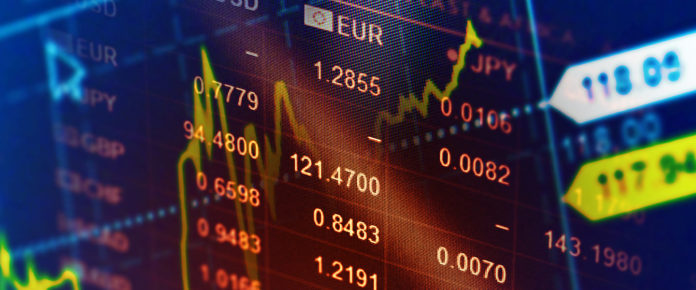Most of us have felt the impact of inflation lately: from the price of gas to the grocery bill. But those are only examples of the first wave of economic pain. Let’s dig.
First, I’ve written in the past that the economic definition of ‘inflation’ is simply the reduction in the buying power of a currency. Prices do not rise on their own; rather, the value of the currency decreases FIRST, then higher prices follow. And unless you somehow acquire more currency (2nd job, raise in salary of primary job, increased investment portfolio, etc.), you now have less real dollars to spend, year-to-year. If you got a 5% raise, but inflation is 10%, you lose 5%. And with rising prices, especially of essentials, consumer behavior changes. Those changes have a ripple effect on the economy as a whole, if not a cascading one.
In a microeconomic sense, inflation changes buying behavior, especially in durable goods (those that do not have a defined shelf life). Cars, homes, appliances, furniture, and many other such goods can have consumers putting off buying durable goods well into the future, if not stopping the buying plans entirely. Spend more on gas and food, there isn’t as much available to buy anything extra. Make the used car last another year, risking repair bills. Staycations replace travel vacations. Movie night becomes Netflix. Dinner out is replaced by dinner in. Pork or chicken replaces beef. That planned house purchase may be delayed months or even years. There simply is no way else to stretch limited, finite resources to cover quick price hikes. Used to take $25 to fill up your car’s gas tank, and now it takes $60? That is $35 less to be spent elsewhere. And if your budget was thin, with very little wiggle room prior to inflation? You may be truly in trouble, as new costs may make your monthly bills exceed your bring-home pay.
But the second wave of economic impact due to inflation is felt on a macroeconomic level. Businesses are not exempt from the pain of higher prices. If a business is a low profit-margin business model, it may go from profitable to losing in very short order. This, in turn, can negatively affect unemployment rates, as unprofitable businesses jettison employees. Which can turn many taxpayers into unemployment insurance tax drains. Consider if your job is to sell the aforementioned durable goods—and sales drop 50%. Compounded with our supply chain issues over the last two years, this just pours salt into the wound. And all of the household spending of the now-unemployed durable goods salesman drops dramatically. If enough of these things happen to the same geographic area, stores of all types now have less sales, leading to layoffs in THEIR stores. And so on. Ripples.
Also consider that this is in the very beginning of this economic cycle—which brings up transitional problems. Prior to the jump in inflation, there was a housing ‘bubble’. More house buyers were out looking for houses to buy than there were houses on the market. That old Supply/Demand thing kicked in again, as always: prices increased dramatically. That rolled over into the apartment rental market, as many first-time buyers were priced out of buying, meaning more renters for existing apartments. THOSE prices increased. Now factor in the inflation, and many folks struggling to pay increased rents are going to get hammered by increased prices. Decreased spending ability for a market as a whole can lag in time well behind housing prices, which are slow to react to market changes. So prices may actually increase short term, even while less money is available to pay them. It is no consolation to the evicted renter that eventually, prices will decrease–his or her impact is immediate. More ripples.
This perfect storm of bad news hasn’t been felt since the ‘stagflation’ days of the late 1970s, into the early 1980s. Back then, we coined a new term: The Misery Index. All three components of the Misery Index (prime lending rate, inflation rate, and unemployment rate) were in double digits. Home and car loans were in the 15-20% range; inflation (as measured then) was 13%, and unemployment hovered between 6 and 10% (it finished 1979 at 6%, to rise again as high as 10.5% in 1982). If you were born after 1985, you have never seen any of the three percentages so high in your lifetime. In the 2000s, we have grown accustomed to 4% home mortgages, 4% inflation, and 5% unemployment. As of this writing, all of those rates are rising at alarming paces.
Another factor to consider here: increased fuel prices, especially diesel. Yes, gas prices are painful to normal consumers. But diesel prices have a direct impact on prices of anything delivered via the trucking industry: nearly every consumer good. This may be a big factor in the food price increases already.
Note that in a pure, unsubsidized economy, unemployment and inflation cannot go the same direction. Loss of job means loss of income (buying power), so that higher unemployment puts downward pressure on prices. They may not go down, but they will at least not rise. The reason both can rise at the same time is unemployment insurance and Welfare. Those without jobs may still have buying power, so prices may rise even as the unemployment rate rises. This dynamic also was prevalent with ‘stimulus’ funds to unemployed folks due to the COVID-19 pandemic (and the resultant government reactions to it).
I have no good answers to combat the inflationary trend. We can quibble over the reasons for such a trend (COVID spending, government spending as a whole, limiting domestic energy production, war in Ukraine, etc.), but right or wrong, the inflation is here. I see nothing to decrease this trend, although I hope I am quite wrong. Spending priorities will likely be changed via necessity for a large portion of the buying public, and many simply do not earn enough to cope. To those that had poor household budgets to begin with (excess credit balances, frivolous habits, over-spending in general), they are in for some terrible times—some may simply fail.
Thank you for taking the time to read my article! Feel free to add comments (good or bad) in the box below. In addition, there is a link at the bottom of the article to view other items I’ve written at Global Liberty Media. Enjoy!





















